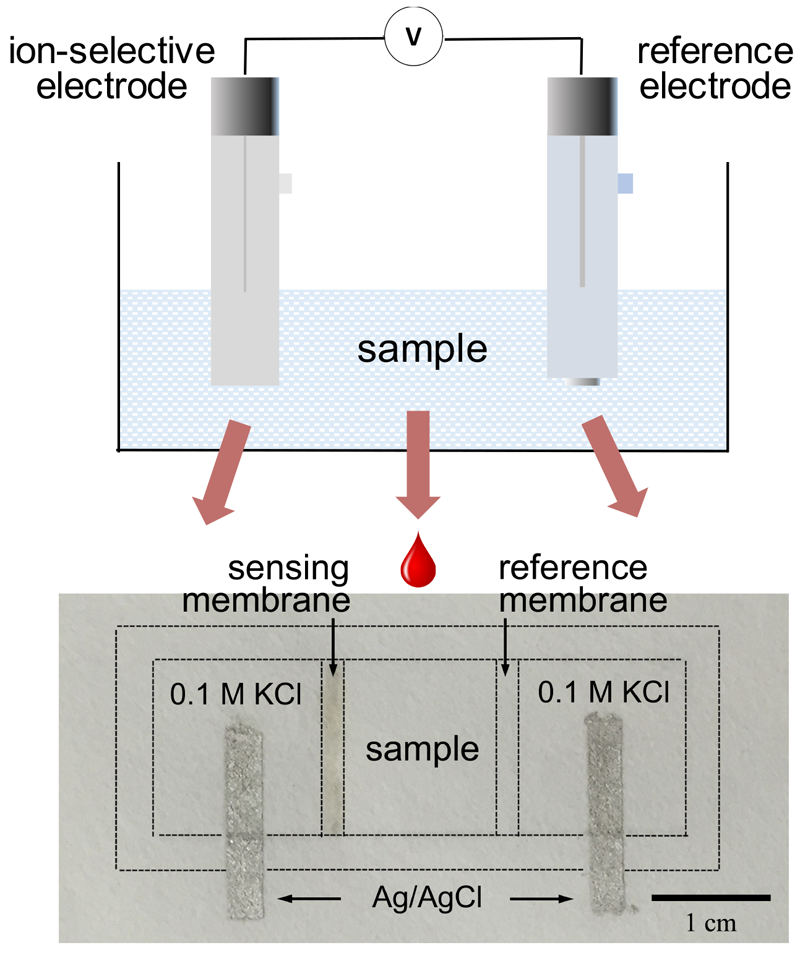

Main navigation | Main content
Ion sensing is an important topic in various fields, such as clinical
and environmental analysis. In recent work reported by Professors
Philippe Bühlmann, Andreas Stein, and their joint graduate student Jinbo
Hu, a disposable and affordable paper-based ion-sensing platform has
been developed and successfully tested for blood analysis using
biological samples. This work has been published in Angewandte Chemie as a "Hot Paper, and published, June 6, in Chemical & Engineering News.
In this work, ion sensing is greatly simplified by embedding the potentiometric cell into a single piece of filter paper, including an ion-selective electrode (ISE), a reference electrode, and a paper-based microfluidic sample zone that offer the full function of a conventional ISE setup. In contrast to previously reported paper-based ion sensors that had to be carefully assembled and calibrated individually, this single-use and highly integrated paper-based ion-sensing platform does not need any pretreatment or sensor calibration. By design, each interface within the cell is well defined with reproducible interfacial potentials, so that the response of the device can be theoretically predicted. For a demonstration of clinical applications, paper-based Cl– and K+ sensors were fabricated with highly reproducible and linear responses towards different concentrations of analyte ions in aqueous and biological samples. The single-use devices are compatible with low-cost voltmeters as a readout tool, do not need well-trained personnel to operate, and only require a low sample volume of 20 µL. As a planar device, its mass production can be potentially achieved by inkjet printing.
This work has been published in Angewandte Chemie as a "Hot Paper," and in the news section of the June 6 edition of Chemical & Engineering News. Previously, part of this work was presented by Jinbo Hu in invited talks at Bell Labs and at the Pittsburgh Conference on Analytical Chemistry and Applied Spectroscopy.
